The Nikon Z6 II and Canon Eos R6 are two full frame mirrorless cameras that pack a lot of features. They certainly share a few similarities, including in-body image stabilisation, hybrid autofocus and 4K 60p video, but once we analyse the specifications a bit closer, there are small yet important differences we need to highlight.
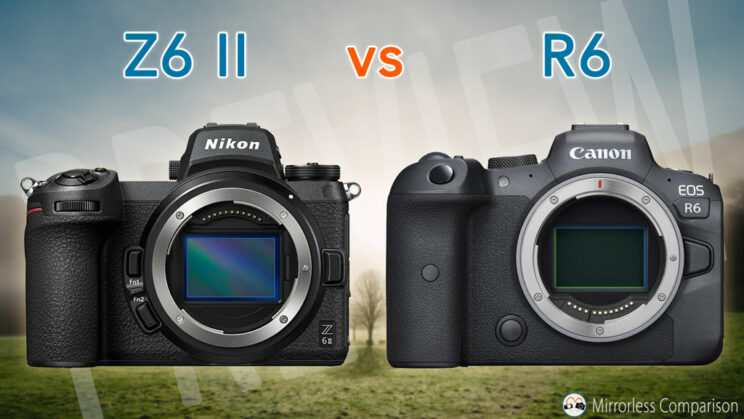
Ethics statement: the following is based on official specs about the Z6 II and our personal experience with the Z6 and R6. We were not asked to write anything about these products, nor were we provided with any sort of compensation. Within the article, there are affiliate links. If you buy something after clicking one of these links, we will receive a small commission. To know more about our ethics, you can visit our full disclosure page. Thank you!
1. Image sensor
The Nikon Z6 II features a 24.5MP sensor, whereas the R6 has about 20% less resolution at 20.1MP. Both cameras have a low pass filter, whereas only the Nikon sensor has a BSI design (back-illuminated). The latter, on paper, provides better light gathering which can improve the quality when it comes to dynamic range and high ISO.

Concerning ISO, the R6 has a wider normal range in photo mode, but a smaller one in video mode. The extended values are the same.
| ISO | Z6 II | R6 |
|---|---|---|
| Photo (normal) | 100-51,200 | 100-102,400 |
| Video (normal) | 100-51,200 | 100-25,600 |
| Photo/Video (extended) | 50-204,800 | 50-204,800 |
With the Z6 II, you can shoot in 12-bit or 14-bit RAW (compressed, lossless compressed or uncompressed), or JPG.
The R6 has two RAW options (14-bit uncompressed or Compressed RAW), JPG and HEIFF. The latter is a 10-bit HDR format that offers more dynamic range than the standard JPG (which is 8-bit). You can see an example below. Keep in mind that Heiff compatibility with popular photo editor software programs is still limited.
The Z6 II has the same sensor as the original Z6, which means it delivers excellent dynamic range and high ISO performance (on par with the popular Sony A7 III). The R6, which we have also tested in-depth, is perhaps slightly better but I’m talking about very small differences here.
2. Image stabilisation
Both cameras have image stabilisation, with a 5-axis mechanism that moves the sensor to compensate for camera shakes. It works in photo and video mode.
The Z6 II has a rating of 5 stops (CIPA), which is the average you find on many mirrorless cameras including the Sony A7 series. It is the same mechanism found on the original Z6, and allows you to take images hand-held around 1s if you have the patience to find a comfortable position and take multiple shots to make sure one is perfectly sharp.
The R6 mechanism has an impressive rating of 8 stops of compensation, however note that this high rating is not achieved with every lens. (More details in our R5 vs R6 comparison.) In our tests, we were able to push the R6 to a shutter speed of two seconds hand-held, although keep in mind that the keeper rate is not perfect (about 30%).
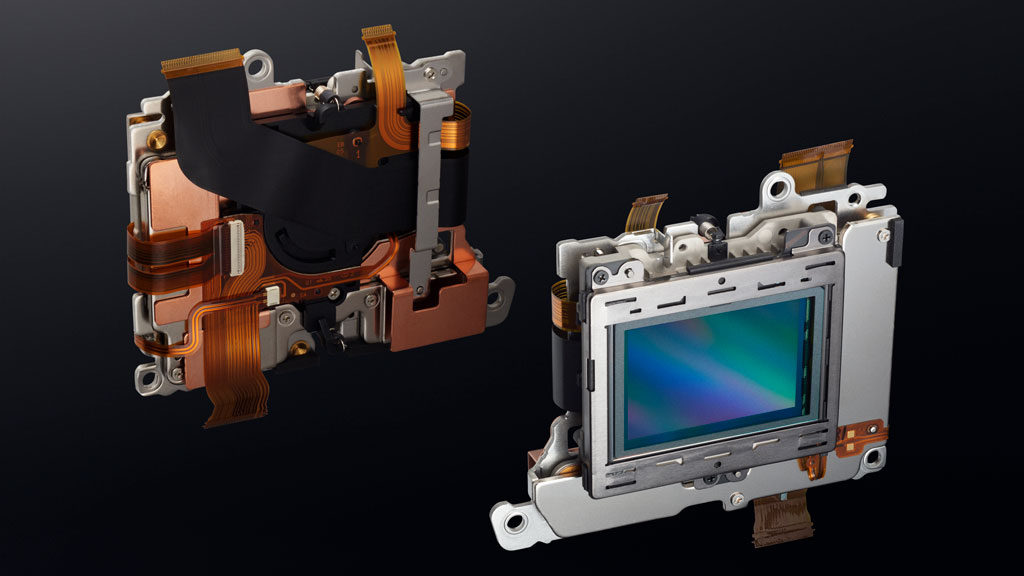
Both systems work in conjunction with optical stabilisation when a compatible stabilised lens is attached. The R6 uses three axes on the sensor (roll, x and y) and the remaining two axes on the lens (pitch and yaw). The Z6 II uses 1 axis on the sensor (roll) and two on the lens.
In video mode, both cameras offer an extra setting: digital stabilisation, which makes the footage more stable but reduces the field of view a little as a result. The R6 has two levels (Enable and Enhanced) with the second cropping the sensor more.
3. Autofocus system and burst speed
Both cameras feature on-sensor phase detection AF points. The Z6 has 273 points that cover 90% of the sensor area.
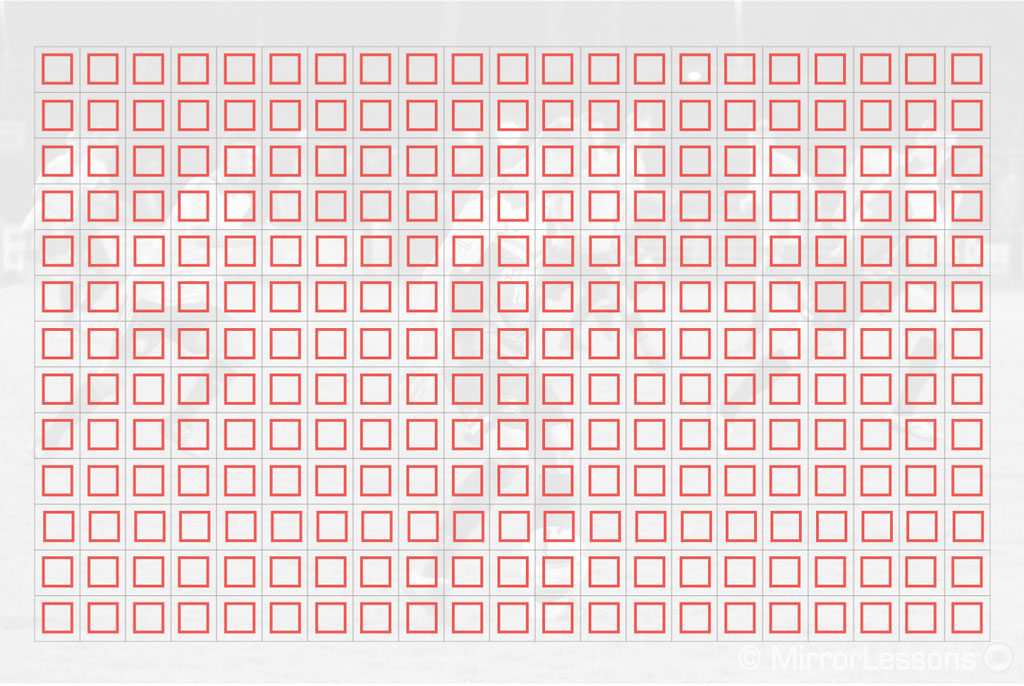
The R6 uses the Dual Pixel CMOS AF technology (version II) that Canon has been developing for a long time now. There is 100% sensor coverage when using the Tracking AF method. With other focus areas, it’s 100% height and 90% width. If you select the Single AF method, you have a whopping 6,072 points!
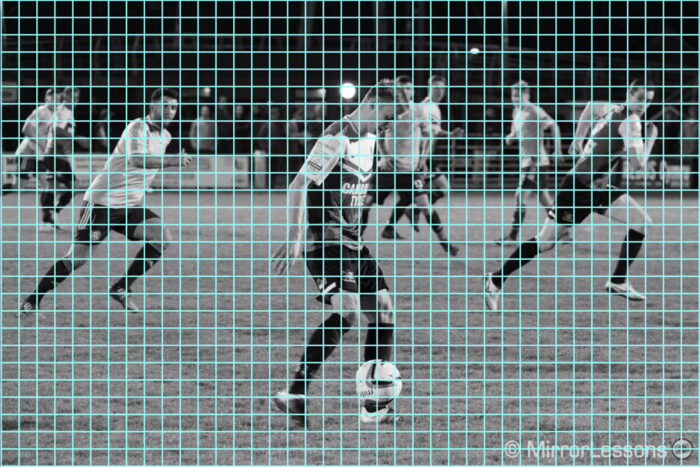
You will find face and eye detection on both cameras, and they can also recognise and focus on the eyes of animals thanks to deep learning technology. However, that of the Z6 II is limited to cats and dogs. The Canon can also detect bodies (human or animals).
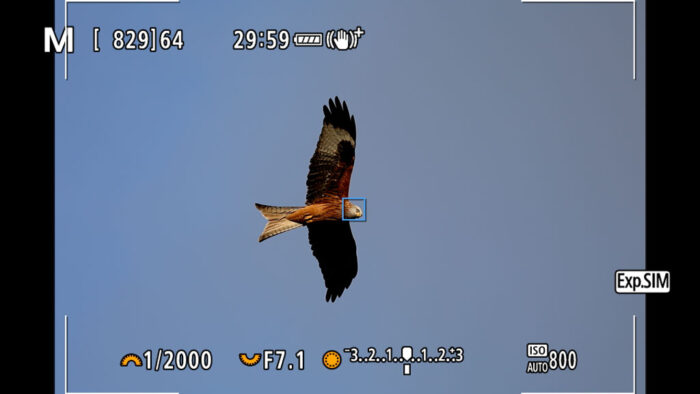
Concerning the sensitivity in low light, the Z6 II has an advantage if you activate the Low Light AF mode, which is slower but can focus in darker conditions.
- Z6 II: -4.5Ev at F2 (or -6Ev with Low Light AF)
- R6: -6.5Ev with a F1.2 lens (or -5 at f/2)
The R6 proved an excellent performer in our tests. Except for a few occasional mis-focusing behaviours when a person wears a hat, it gave us a nearly perfect hit rate for face / eye detection (stills and video) and an excellent score for birds in flight, being outranked only by the Sony A9 series.
The Z6 II received some improvements (in comparison to the Z6 mark I) that I have yet to test, but it’s worth pointing out that the original model did very well in my birds test, and I also found Eye AF reliable, although not as fast as the Canon system. If anything, the Z6 II should be closer to the performance of the R6.
The Z6 II can shoot in continuous mode up to 14fps, although at this speed the bit depth for RAW files is limited to 12-bit. If you want 14-bit, the speed is slightly lower at 12fps.
The R6 goes up to 12fps, or up to 20fps when you select the electronic shutter. All these speeds are available with AF and AE tracking on both cameras.
The buffer memory is larger for the Canon. Whereas the Z6 II can record 124 RAW or 200 JPGs at 14fps before slowing down, the R6 can do 240 RAW files or 1000 JPGs at 12fps.
4. Video
Both cameras can record 4K video up to 60p, whereas in Full HD they can go up to 120p.
The Z6 II uses the entire width of the sensor and over-samples from a 6K region up to 30p. At 50 and 60p however, a 1.5x crop is applied to the sensor.

The R6 applies a small crop of 1.07x at all frames rates in 4K, meaning that your field of view doesn’t change drastically when recording at 50fps or 60fps.
Recording in 10-bit 4:2:2 is available internally on the R6, whereas you need an external recorder connected to the HDMI port for the Z6 II. The Nikon also has a RAW video option in 12-bit with the same connection, but you need a paid upgrade at a Nikon centre to enable it.
The R6 also has a higher bitrate. Here is a recap of all the main video specs.
| Video specs. | Z6 II | R6 |
|---|---|---|
| 4K 50/60p | 1.5x crop | 1.07x crop |
| 4K 24 to 30p | No crop | 1.07x crop |
| Full HD | No crop | No crop |
| 4K 50/60p Max. bitrate | 144Mbps | 340Mbps |
| 4K 24 to 30p Max. bitrate | 144Mbps | 170Mbps |
| Full HD 120p Max. bitrate | 144Mbps | 180Mbps |
| Full HD 50/60p Max. bitrate | 56Mbps | 90Mbps |
| Bit depth (internal) | 8-bit 4:2:0 | 8-bit 4:2:0 10-bit 4:2:2 |
| Bit depth (HDMI) | 10-bit 4:2:2 | 10-bit 4:2:2 |
| RAW (HDMI) | 12-bit | – |
| Log / HDR (internal) | – | C-Log HDR PQ |
| Log / HDR (HDMI) | N-Log HLG | C-Log HDR PQ |
Concerning audio, both cameras offer a 3.5mm microphone input and headphone output.
The R6 delivers excellent video quality with fast and reliable autofocus and a good range of formats to choose from. The only limit is overheating, which is not as dramatic as it was once believed (also thanks to firmware updates) but it can definitely slow down your production day.
I haven’t heard reports of overheating problems with the Z6 II (nor have I experienced any with the original Z6), but it’s a shame that the most advanced settings (N-Log, 10-bit recording) are limited to the HDMI output.
5. Design
The Canon model is slightly bigger and has a larger front grip, whereas the Nikon is a bit taller. The two remain very similar overall when it comes to dimensions and weight. They are dust and moisture resistant, and feature a magnesium alloy frame.
- Z6 II : 134 x 100.5 x 69.5mm, 705g
- R6: 138 x 97.5 x 88.4mm, 680g
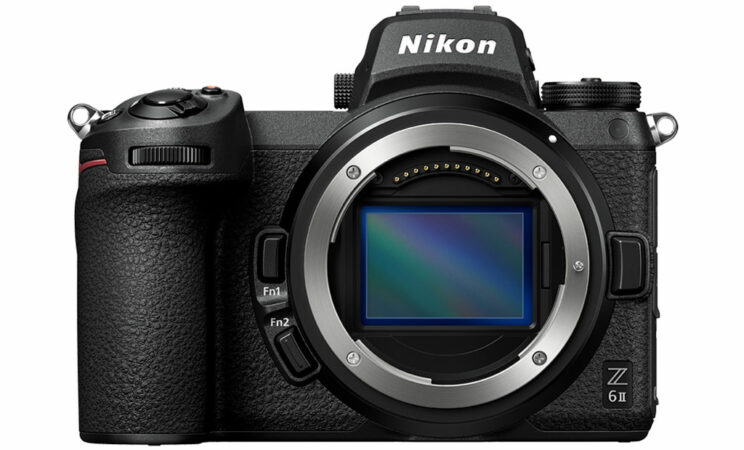
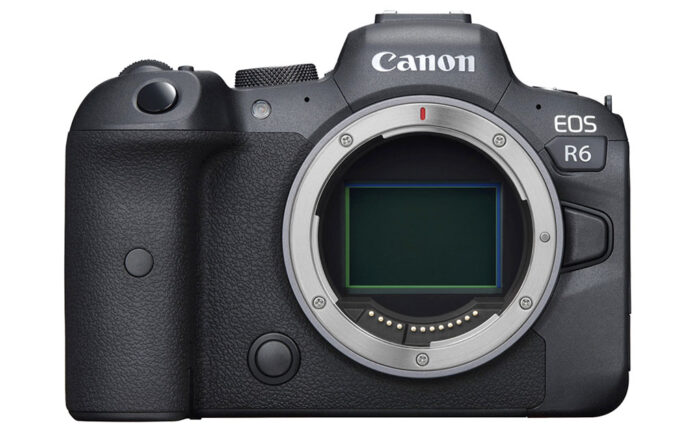

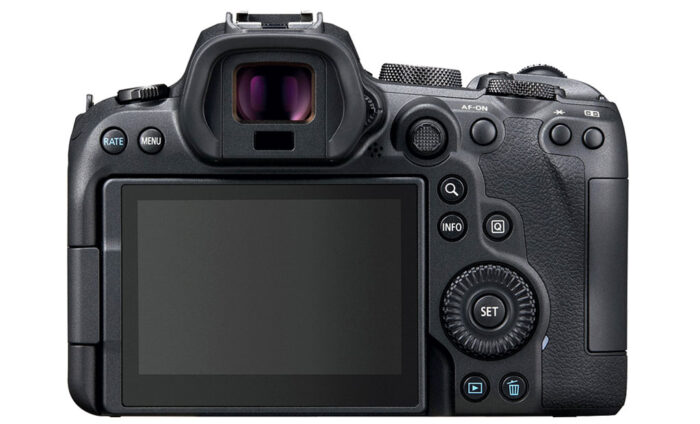

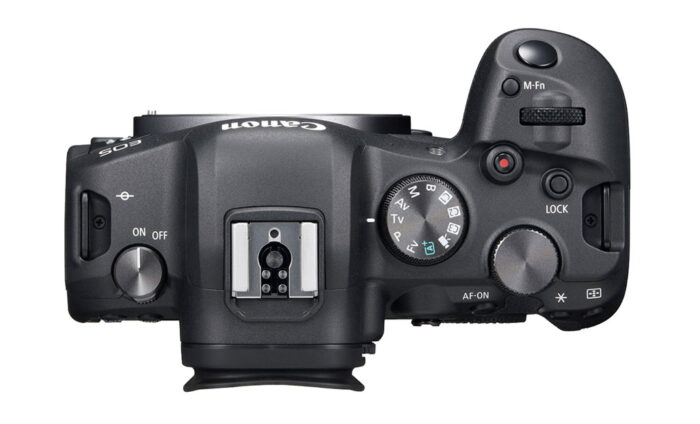
I like the design and ergonomics of both cameras, so it is hard for me to pick a favourite.
The R6 has more custom buttons which is nice if you like to personalise your camera as much as possible, although you can’t change the Quick menu, unlike with the Nikon.
I find the photo/video mode switch on the rear of the Z6 II very handy, as well as the position of the two Function buttons at the front. The Nikon also has a small LCD screen on top to check the basic settings quickly.
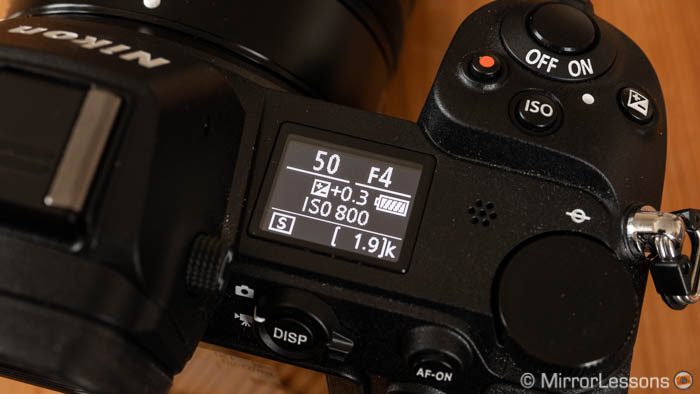
When it comes to physical connections, both cameras have a USB Type C port and HDMI output. For the latter, Nikon has chosen the Mini size (Type C) whereas Canon uses the Micro size (Type D).
6. Viewfinder and rear monitor
The Z6 II and R6 have a very similar electronic viewfinder with 3.69M dots and a 23mm eyepoint. The EVF on the Canon has a higher frame rate (120fps vs 60fps) whereas the magnification is higher on the Nikon model (0.8x vs 0.76x).

As for the rear LCD screen, the one on the Z6 II has more resolution (2.1M vs 1.61M dots) and is slightly larger (3.2 vs 3.15-in). The articulation mechanism is different however: that of the Nikon tilts up and down, without any selfie/v-log possibility. On the Canon, you can flip the screen to the side and rotate it 180˚.
Both monitors are touch sensitive and allow you to perform a variety of operations, from taking a picture to navigating the entire menu.
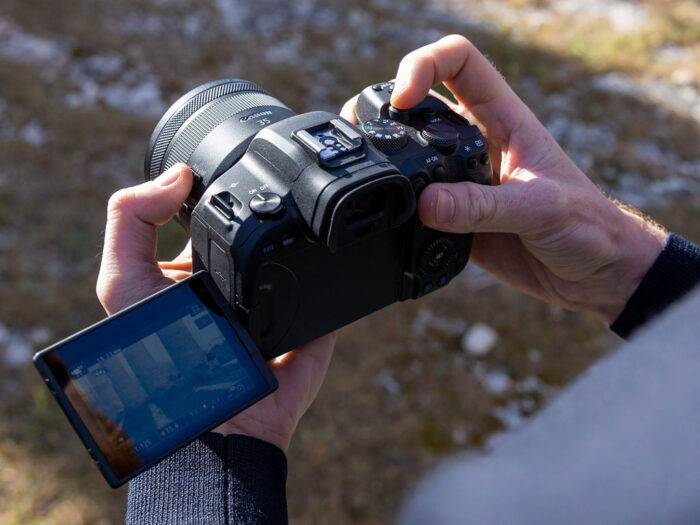
7. Memory card
The Z6 II has duel memory card slots but you can’t use the same type of card in both slots. The first takes CFexpress or XQD cards, whereas the second takes UHS-II SD cards.
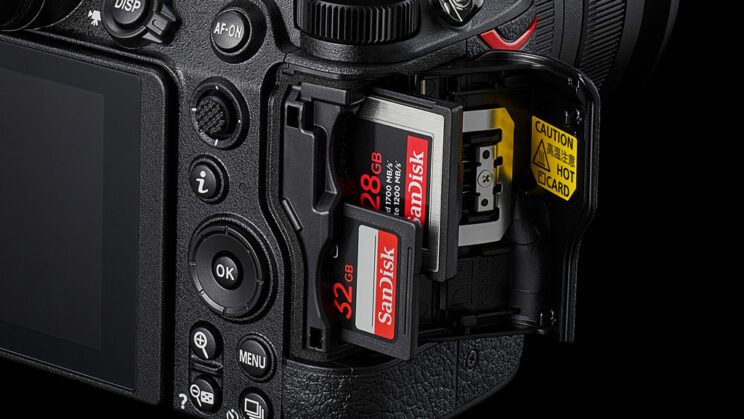
The R6 has two slots compatible with SD cards (UHS-II).
The XQD / CF Express cards are thicker and faster than SD cards, but they are also more expensive.
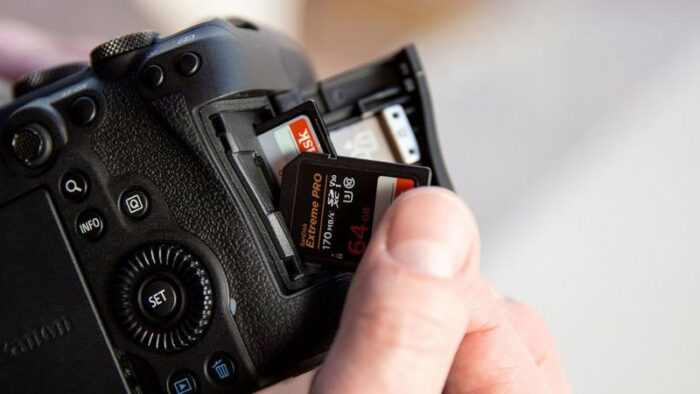
8. Battery
The Nikon comes with the LP-E6NH and has a rating of 410 frames (LCD) or 390 frames (EVF) with a single charge. These are CIPA standards so they are always lower than the numbers you can achieve in real world use.
The R6 does a bit better, especially if you use the LCD with a rating of 510 shots (it’s 380 with the EVF).
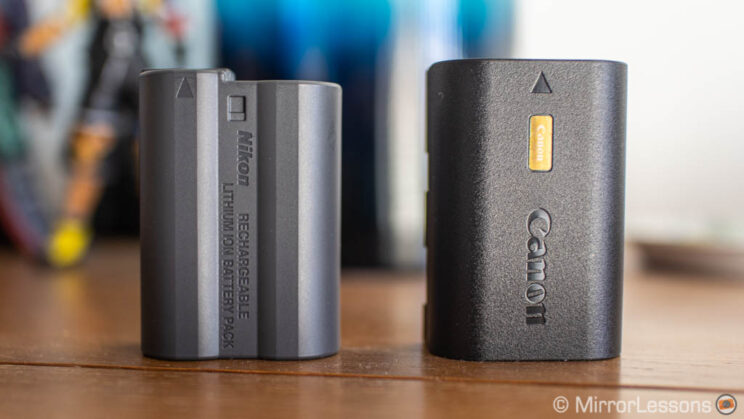
You’ll find an optional battery grip for both products, and you can also charge them or power them via USB. Keep in mind that the R6 power delivery may not work with every powerbank (it needs to be a high current model).
9. Lenses
Nikon and Canon started their mirrorless full frame line-up at the same time in 2018. Three years later, they have released a good selection that includes F2.8 zooms among other things.
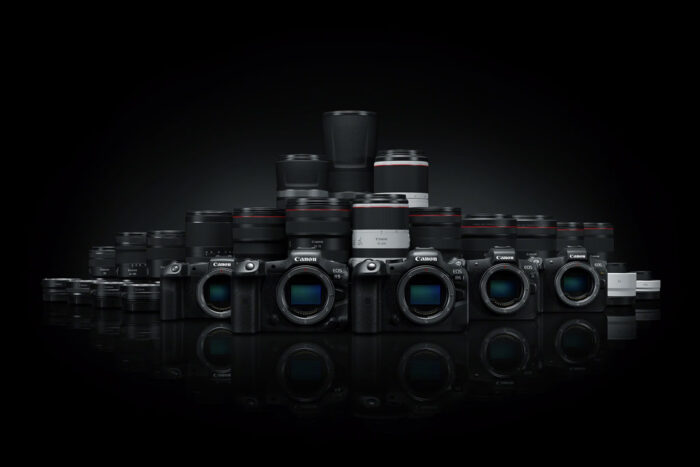
Canon has released 23 lenses and two extenders so far. In comparison to Nikon, it has more telephoto lenses for photographers on a budget or those wanting the ultimate performance. The brand has also concentrated on compactness, reducing the dimensions of lenses such as the 70-200mm F4 or 70-200mm F2.8. It also has some unique lenses like the 28-70mm F2. Lately, more affordable lenses have surfaced which is something that was lacking before.
Nikon has released 20 lenses and two teleconverters. More are on the way, including 100-400mm and 200-600mm telephoto lenses. There is a good number of 1.8 primes, and some unique offerings such as the super fast (and super expensive) Noct 58mm f/0.95 (manual focus only). Lately, the company has also released more affordable and compact lenses.
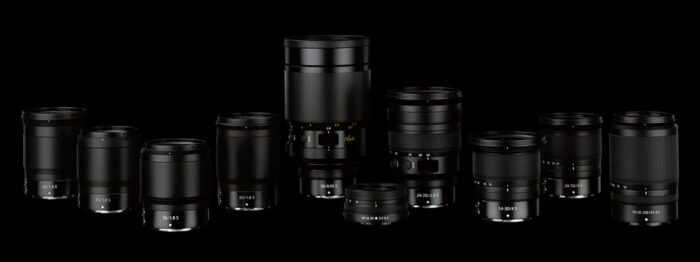
With both cameras, you can expand the choice by using an adapter with DSLR lenses (Nikkor F and Canon EF), and both brands have designed their own adapter for this (Canon has three of them). The AF performance remains very good and all the other automatisms are available. This is especially useful for those who want to transition from a Canon or Nikon DSLR set-up to a mirrorless set-up.
Nikon has also released two APS-C cameras with the Z-mount so far, the Z50 and Z fc. Canon has its own APS-C series, the EOS M, but the mount is not the same as the EOS R series, so you can’t interchange lenses between the two, unlike with Nikon.
10. Price
The Z6 II can be purchased from $2000, £2000 or €2200 for the body only.
The R6 is more expensive and starts at $2500, £2400 / €2400 (body only).
Note these prices are as of late September 2021, and may vary over time.
Conclusion
The Nikon Z6 II and Canon R6 are two very competitive full frame cameras on the market today, and I admit that if I were to choose between the two, I would not be able to make a decision quickly. If we dig deeper, we find a number of differences that could lead you towards one or the other.
The image quality is very similar, with the Nikon packing a few more megapixels. They have excellent autofocus performance, with perhaps the R6 having a small advantage thanks to features such as animal subject detection that is more complete in terms of the quantity of animals the camera can recognise. The Canon also has the advantage of a faster burst speed when using the electronic shutter.
The R6 has more attractive features for video, and these include 10-bit and Log available for internal recording, a higher bitrate and the possibility of recording 4K 50/60p without a big sensor crop. With the Z6 II, Log and 10-bit are only available via the HDMI port, and 4K 50/60p has a 1.5x crop.
If you don’t mind using an external recorder, then the Nikon is the only one with a 12-bit RAW video options, as long as you’re fine with sending the camera to Nikon’s Repair Service for a fee.
The two are different in their own way when it comes to design and ergonomics, but they both offer solutions that I really like in terms of the button layout. Another advantage of the Canon is that it uses the same type of card for both slots.
Check price of the Nikon Z6 II on
Amazon | Amazon UK | B&H Photo | eBay
Check the price of the Canon EOS R6 on:
Amazon | Amazon UK | B&H Photo | eBay
